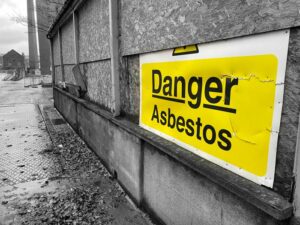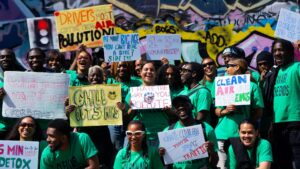Since the introduction of Sheffield City Council’s Clean Air Zone in 2023, the annual average data shows a significant reduction in nitrogen dioxide (NO2) levels from road traffic pollution across the city.
Specifically, there has been a 16% reduction in NO2 levels within the CAZ itself and an average NO2 reduction of 21% across the wider Sheffield district.
Sheffield implemented a Class C CAZ on 27th February 2023, requiring heavy good vehicles, light goods vehicles, vans, taxis, buses and coaches to meet minimum emissions standards or pay a daily charge to drive into Sheffield’s inner city and ring road. Motorbikes and private cars are not affected.
The 2023 annual average air quality data, from January to December 2023, shows a reduction in NO2 across every one of the monitored locations in Clean Air Zone when compared to 2022.
Following the implementation of a bus gate at Arundel Gate in March, the level of NO2 observed in the area has fallen by 27%, bringing the area within legal NO2 levels in 2023.
The bus gate was implemented through an Experimental Traffic Regulation Order, with a period of statutory consultation running for the first six months. Next week, members of the Transport, Regeneration and Climate Policy Committee will be asked to approve plans to make the bus gate permanent.
Before the CAZ went live, the council ran a Financial Assistance Scheme, through which 1,081 people received grants to upgrade or replace non-compliant vehicles with cleaner ones. A further 514 people applied for retrospective funding for vehicles they had already upgraded or replaced.
In May 2022, 64% of the taxis entering the CAZ area were compliant. By May 2024, this figure was 95%.
As the introduction of Clean Air Zones are normally accompanied by stories of businesses going bust through lack of trade, the Council point to data revealing that vehicle journeys into the zone have not fallen, suggesting the fall in NO2 levels is due to vehicle upgrades.
Cllr Ben Miskell, Chair for the Transport and Regeneration Committee for Sheffield City Council, said: ‘I’m really pleased to share that air quality in the city is improving. Data collected as part of the Clean Air Zone shows that air pollution caused by vehicles has dropped right across the city, and we’re seeing that more and more people and business are making the switch to cleaner vehicles – it’s a fantastic achievement for Sheffield.
‘In the coming year we expect to see even further improvements in our air quality, but there’s much more to be done to make sure that Sheffield’s air quality levels move closer to those recommended by the World Health Organisation.
‘This is a brilliant start, but it is only a start, however, I want to take this opportunity to thank business and people across Sheffield who have made the transition to cleaner, less polluting vehicles.’
Emphasising Cllr Miskell’s point, the council are now turning their attention to five locations where, despite falling over the last year, NO2 levels remain above legal levels.
Greg Fell, Director of Public Health for Sheffield City Council, said: ‘Whilst our first look at the annual average data is very positive, this is no time to slow down on clean air initiatives. We know that there are some locations across Sheffield that are still in exceedance of legal air quality limits, so there’s more to be done to improve the air we breathe.
‘Legal limits for air pollution are set by the Government. However, these limits are not as strict as guidelines suggested by health experts like the World Health Organisation. This means that while the air might be considered “safe” by law, it is still harmful to our health, especially for children, older people and cause problems like asthma, heart disease, and other illnesses.’
















Leave a Reply